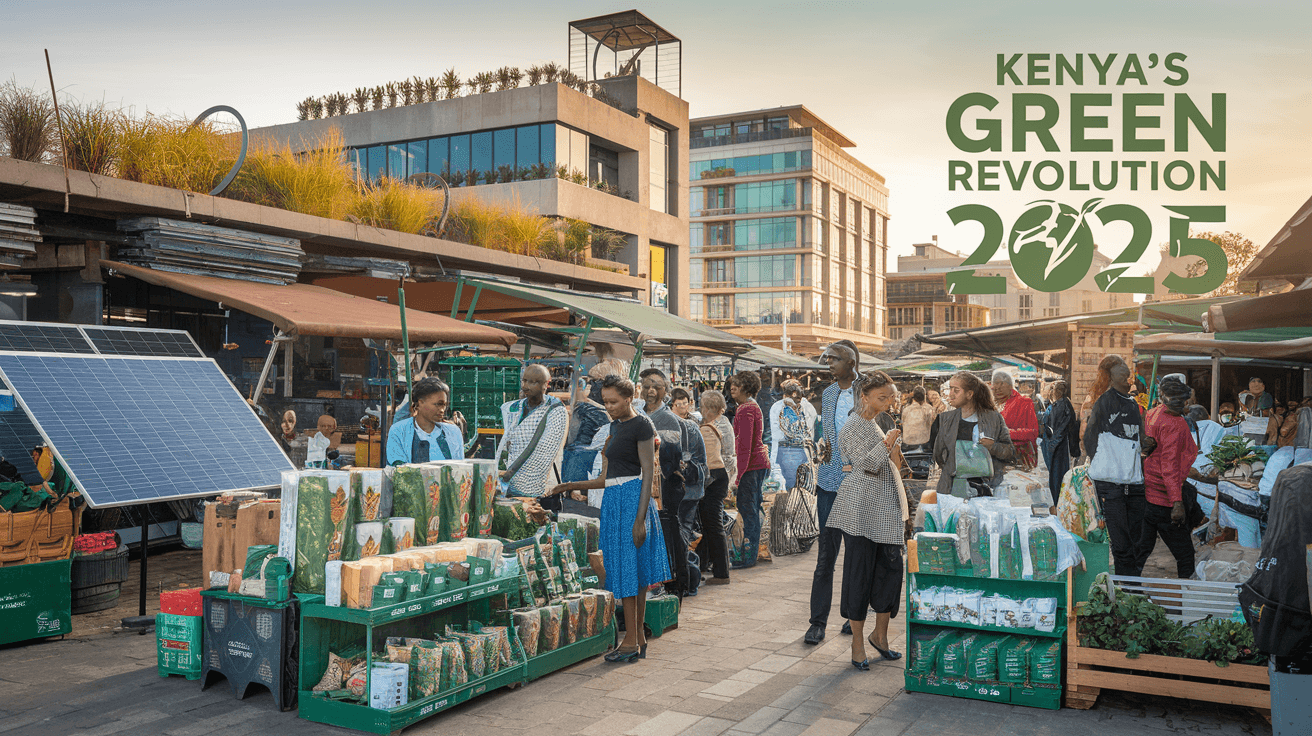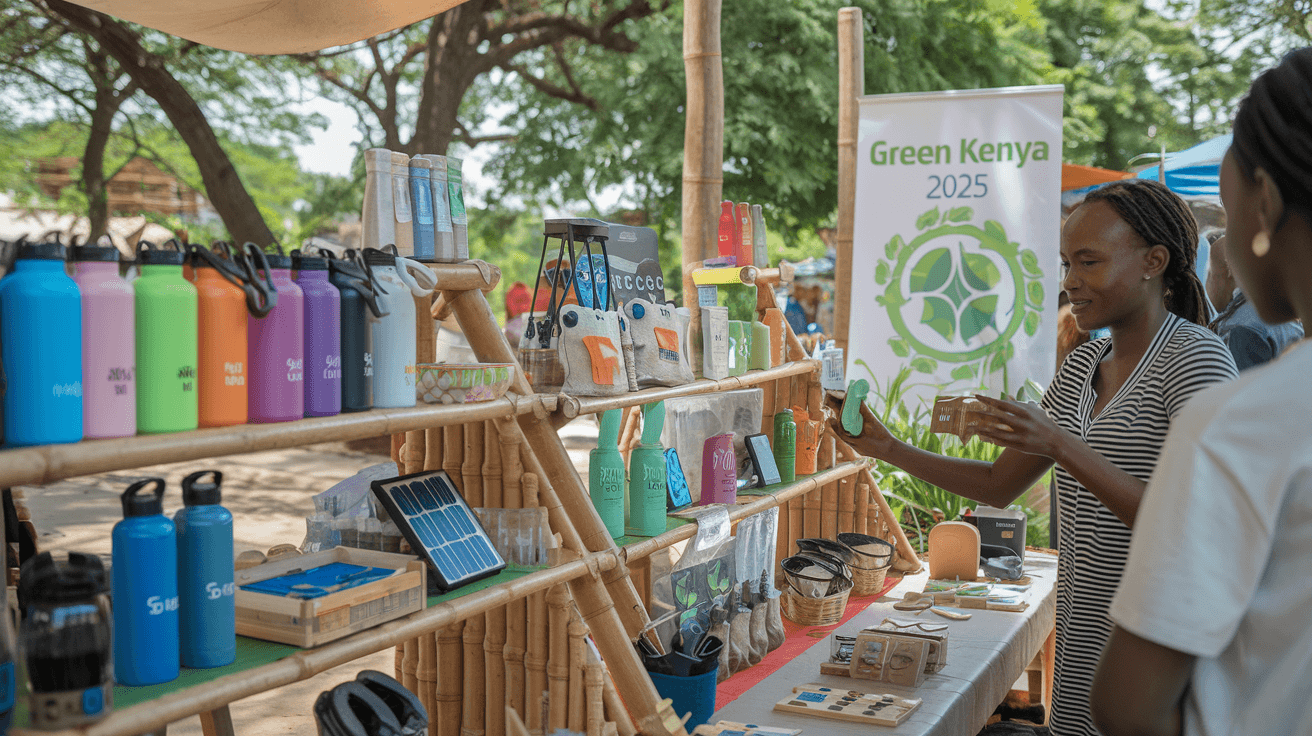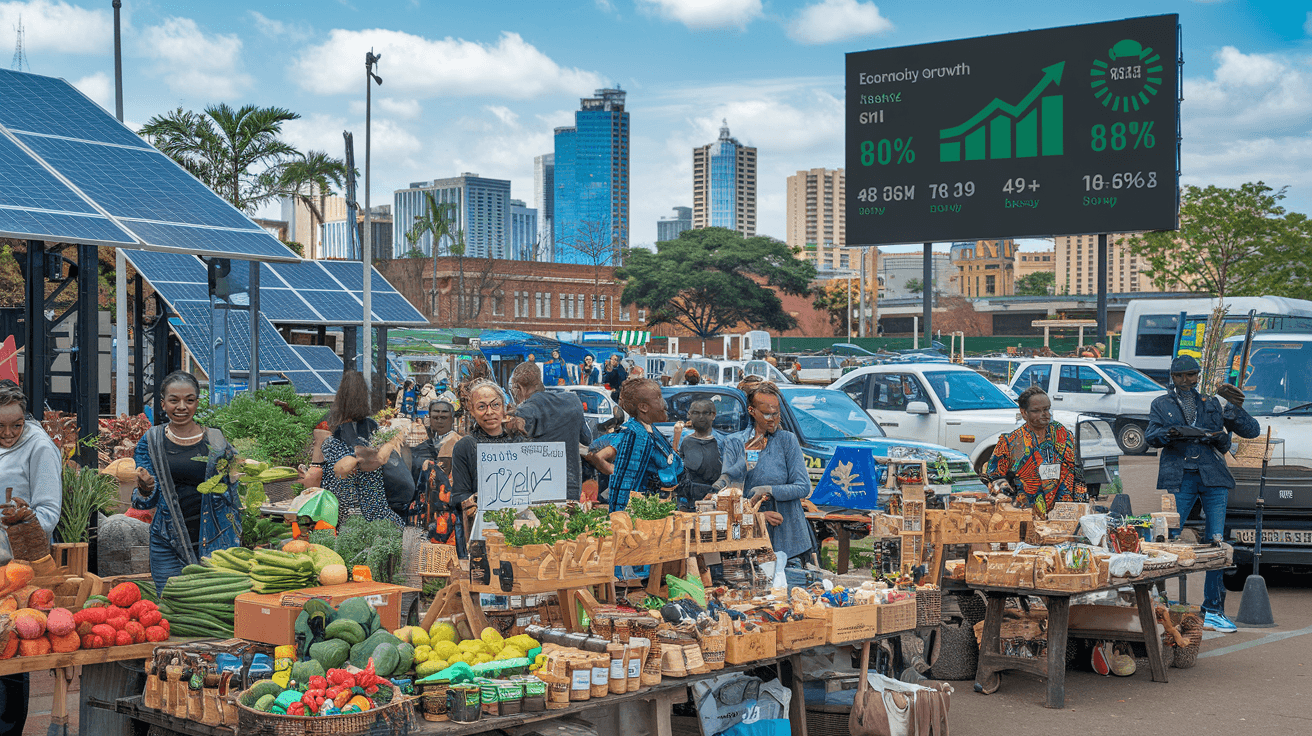
Kenya’s Green Revolution: Eco-Friendly Bestsellers of 2025
Kenya’s Green Revolution is in full swing, and it’s not just about planting trees anymore. As we step into 2025, the East African nation is making waves with its eco-friendly bestsellers that are capturing global attention. From innovative solar gadgets to biodegradable fashion, Kenya’s green sector is booming like never before.
But what’s driving this surge in eco-conscious products? It’s a perfect storm of consumer awareness, government initiatives, and entrepreneurial spirit. Kenyans are not just embracing sustainability; they’re reinventing it. And the world is taking notice.
In this post, we’ll dive into the heart of Kenya’s eco-innovation landscape, unveiling the top green products that are flying off the shelves in 2025. We’ll explore how these innovations are reshaping the country’s economy, the consumer trends fueling this green revolution, and the challenges and opportunities that lie ahead. Buckle up for a journey through Kenya’s greener, brighter future!
Kenya’s Eco-Innovation Landscape

Rise of green technology startups
Kenya’s eco-innovation landscape has been transformed by a surge in green technology startups. These innovative companies are tackling environmental challenges while creating sustainable solutions for various sectors. Here’s a look at some notable green tech startups:
- SolarKiosk: Providing solar-powered retail hubs in off-grid areas
- Sanergy: Converting organic waste into fertilizer and animal feed
- BRCK: Developing rugged, self-powered Wi-Fi devices for remote areas
- M-Kopa: Offering pay-as-you-go solar energy systems for households
| Startup | Focus Area | Impact |
|---|---|---|
| SolarKiosk | Renewable Energy | Electrification of rural areas |
| Sanergy | Waste Management | Improved sanitation and agriculture |
| BRCK | Connectivity | Internet access in remote regions |
| M-Kopa | Solar Energy | Affordable clean energy for households |
These startups are not only addressing environmental concerns but also creating jobs and driving economic growth in Kenya’s green sector.
Government initiatives supporting eco-friendly businesses
The Kenyan government has implemented several initiatives to foster the growth of eco-friendly businesses:
- Green Economy Strategy and Implementation Plan (GESIP): A framework for transitioning to a low-carbon, resource-efficient economy
- Climate Change Act 2016: Legislation promoting climate-resilient development
- Tax incentives for renewable energy projects
- Green bonds for financing sustainable infrastructure
These policies have created a conducive environment for sustainable innovation and attracted both local and foreign investment in Kenya’s green sector.
Key players in Kenya’s sustainable product market
Several established companies are leading the way in Kenya’s sustainable product market:
- Safaricom: Pioneering e-waste recycling programs
- Kenya Tea Development Agency: Implementing sustainable tea farming practices
- Bamburi Cement: Utilizing alternative fuels and materials in cement production
- East African Breweries: Adopting water conservation and renewable energy in brewing
These key players are setting industry standards for sustainability and inspiring smaller businesses to adopt eco-friendly practices. Their success demonstrates the viability and profitability of sustainable business models in Kenya.
Top Eco-Friendly Bestsellers of 2025

Solar-powered home solutions
Solar-powered home solutions have taken Kenya by storm, becoming a cornerstone of the country’s green revolution. These innovations are not only environmentally friendly but also cost-effective in the long run.
- Solar water heaters
- Solar-powered refrigerators
- Solar lighting systems
- Solar-powered home security systems
| Product | Energy Savings | Cost Recovery Period |
|---|---|---|
| Solar water heaters | Up to 80% | 2-3 years |
| Solar refrigerators | 60-70% | 3-4 years |
| Solar lighting | 90-100% | 1-2 years |
| Solar security systems | 70-80% | 2-3 years |
Biodegradable packaging alternatives
As Kenya tackles plastic pollution, biodegradable packaging has emerged as a game-changer. These eco-friendly alternatives are revolutionizing the packaging industry:
- Cassava-based bags and wrappers
- Banana leaf packaging for fresh produce
- Mycelium (mushroom root) containers
- Seaweed-based sachets for liquids
Water conservation technologies
In response to water scarcity issues, Kenyan innovators have developed cutting-edge water conservation technologies:
- Smart irrigation systems using AI and IoT
- Atmospheric water generators
- Greywater recycling units for homes and businesses
- Low-flow, high-efficiency faucets and showerheads
Sustainable fashion brands
Kenya’s fashion industry is embracing sustainability with local brands leading the charge:
- Upcycled textile collections
- Plant-based leather alternatives
- 3D-printed, zero-waste clothing lines
- Traditional craft-inspired, eco-friendly accessories
These eco-friendly bestsellers are not only addressing environmental concerns but also creating new economic opportunities across various sectors in Kenya.
Impact on Kenya’s Economy

Job creation in green sectors
Kenya’s eco-friendly revolution has sparked a significant surge in job opportunities across various green sectors. The development and production of sustainable products have led to the creation of thousands of new positions, ranging from research and development to manufacturing and distribution.
- Key green sectors driving job growth:
- Renewable energy
- Sustainable agriculture
- Eco-friendly manufacturing
- Green construction
- Environmental conservation
| Sector | Estimated Jobs Created (2025) |
|---|---|
| Renewable Energy | 50,000+ |
| Sustainable Agriculture | 75,000+ |
| Eco-friendly Manufacturing | 40,000+ |
| Green Construction | 30,000+ |
| Environmental Conservation | 25,000+ |
These new job opportunities have not only reduced unemployment rates but also fostered skill development in sustainable technologies, positioning Kenya as a leader in green innovation across Africa.
Export potential for eco-friendly products
Kenya’s eco-friendly bestsellers have opened up new avenues for international trade, significantly boosting the country’s export potential. The global demand for sustainable products has created a lucrative market for Kenyan innovations, ranging from biodegradable packaging to solar-powered appliances.
Key export markets include:
- European Union
- North America
- Middle East
- Other African countries
The increased export of eco-friendly products has not only diversified Kenya’s export portfolio but also improved its trade balance, contributing to overall economic growth.
Attracting foreign investment in sustainability
The success of Kenya’s green revolution has caught the attention of international investors, leading to a substantial influx of foreign capital into the country’s sustainability sector. This investment has provided crucial funding for research and development, infrastructure improvements, and scaling up of eco-friendly production capabilities.
Foreign investors are particularly attracted to:
- Innovative startups in the green tech space
- Large-scale renewable energy projects
- Sustainable urban development initiatives
The increased foreign investment has not only accelerated the growth of Kenya’s green sectors but also enhanced technology transfer and knowledge sharing, further solidifying the country’s position as a hub for sustainable innovation in Africa.
Consumer Trends Driving Green Product Adoption

Increased environmental awareness
The eco-friendly product revolution in Kenya is largely driven by a surge in environmental consciousness among consumers. This heightened awareness stems from various factors:
- Exposure to global climate issues
- Local environmental challenges
- Educational initiatives
- Social media campaigns
| Factor | Impact on Awareness |
|---|---|
| Global climate news | High |
| Local environmental issues | Very high |
| Educational programs | Moderate |
| Social media influence | High |
Kenyan consumers are now more informed about the environmental impact of their purchasing decisions, leading to a preference for sustainable products.
Shift towards sustainable lifestyles
As awareness grows, Kenyans are increasingly adopting sustainable lifestyles. This shift is evident in:
- Reduced single-use plastic consumption
- Preference for energy-efficient appliances
- Support for local, organic produce
- Embrace of renewable energy solutions
These lifestyle changes are creating a robust market for eco-friendly products, driving innovation and competition among manufacturers.
Affordability of eco-friendly alternatives
A key factor in the widespread adoption of green products is their increasing affordability. This trend is facilitated by:
- Economies of scale in production
- Government incentives for eco-friendly businesses
- Technological advancements reducing production costs
As prices become more competitive, more Kenyans can access and choose sustainable alternatives, further accelerating the green revolution.
Now that we’ve explored the consumer trends driving green product adoption, let’s examine the challenges and opportunities facing Kenya’s eco-friendly market.
Challenges and Opportunities

A. Scaling production of green products
Scaling up the production of eco-friendly products in Kenya presents both challenges and opportunities. As demand for sustainable goods increases, manufacturers face the task of expanding their operations while maintaining quality and affordability.
Key challenges in scaling production:
- Limited access to raw materials
- Insufficient infrastructure
- Lack of skilled workforce
- High initial investment costs
Despite these hurdles, opportunities abound:
- Government incentives for green industries
- Potential for job creation
- Improved global competitiveness
| Challenge | Opportunity |
|---|---|
| Limited raw materials | Development of local supply chains |
| Infrastructure gaps | Investment in sustainable facilities |
| Skill shortage | Training programs and knowledge transfer |
| High costs | Long-term cost savings and efficiency |
B. Overcoming technological barriers
Technological advancement is crucial for Kenya’s green revolution. Innovators must tackle barriers such as:
- Limited R&D funding
- Inadequate technology transfer
- Lack of specialized equipment
To overcome these challenges, Kenya can:
- Foster partnerships with international tech firms
- Establish innovation hubs and incubators
- Invest in STEM education to build local expertise
C. Competing with traditional products
Green products often face stiff competition from established, non-eco-friendly alternatives. To succeed, Kenyan eco-friendly bestsellers must:
- Emphasize unique value propositions
- Match or exceed quality standards
- Educate consumers on long-term benefits
D. Potential for regional market expansion
As Kenya’s green revolution gains momentum, opportunities for regional expansion emerge. The East African Community (EAC) presents a promising market for Kenyan eco-friendly products. To capitalize on this potential, businesses should:
- Adapt products to regional preferences
- Establish distribution networks
- Leverage trade agreements within the EAC
By addressing these challenges and seizing opportunities, Kenya can solidify its position as a leader in sustainable innovation across Africa.

Kenya’s eco-friendly revolution is reshaping the nation’s economic landscape, with innovative green products taking center stage in 2025. From sustainable fashion to renewable energy solutions, these bestsellers are not only meeting consumer demands but also driving significant economic growth. The shift towards eco-conscious consumption reflects a growing awareness of environmental issues among Kenyans, paving the way for a more sustainable future.
As Kenya continues to embrace this green transformation, both challenges and opportunities lie ahead. By addressing hurdles such as infrastructure development and accessibility, the country can further capitalize on its eco-innovation potential. Embracing these environmentally friendly products and supporting local green initiatives will not only benefit the planet but also contribute to Kenya’s continued economic prosperity and global leadership in sustainability.